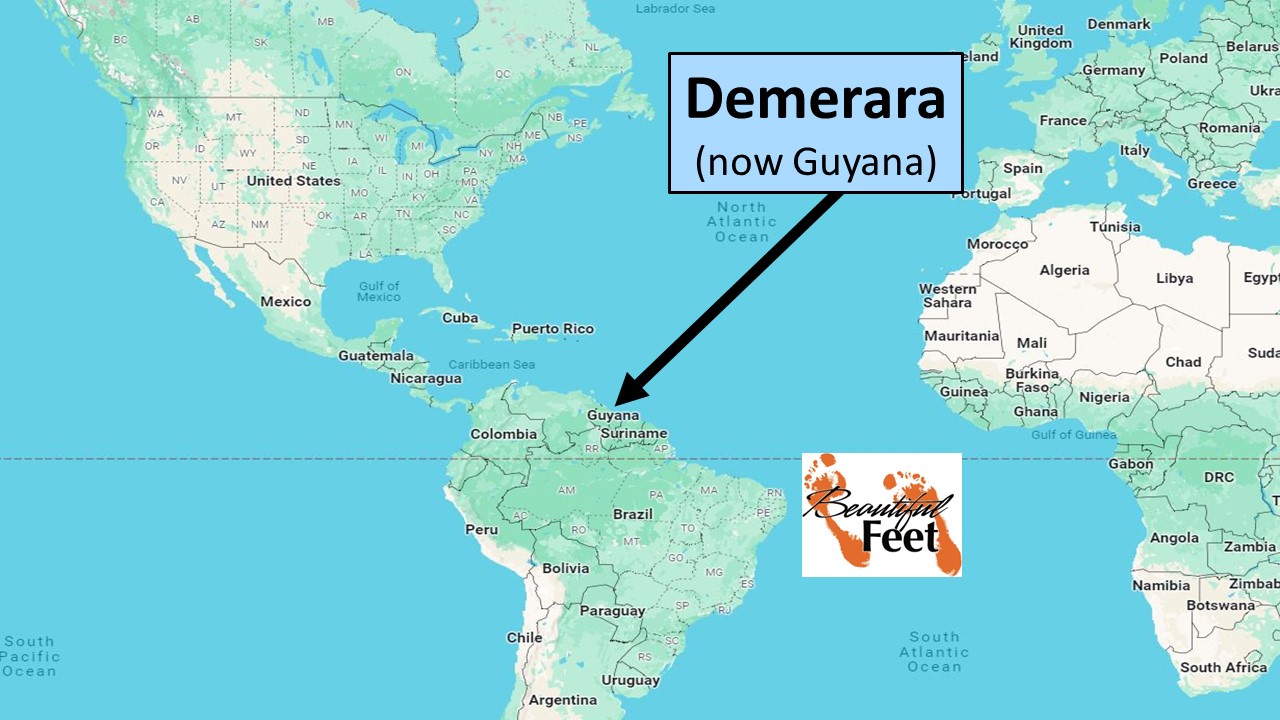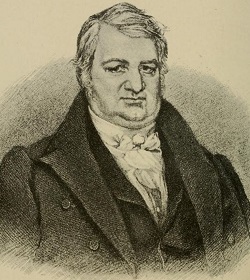1809 Demerara Revival (Guyana)


Introduction
This revival took place in what is now known as Guyana, South America. At the time, the area was the Colony of Demerara, a Dutch Colony from 1745 until 1815 when it was ceded to the British.
The plantation owners at that era opposed enslaved blacks hearing the Gospel, fearing it would lead to the dismantling of the slavery system. The Royal Gazette of 1808 echoed these sentiments, reflecting the views of the plantation owners:
What will be the consequence, when to that class of men [the enslaved] is given the title of ‘beloved brethren,’ as is actually done? Will not the negro conceive that by baptism, being made a Christian, he is as credible as his Christian white brethren?

Leading Figure in the Revival
The first missionary permitted to preach and teach the enslaved was John Wray, affiliated with the London Missionary Society. Wray arrived in Demerara on February 6, 1808, and spent five years there.

John Wray
From Wray’s Early 1808 letter:
Not long after his arrival, Wray wrote a letter providing information about the ministry that was taking place. It’s crucial to note that preaching the Gospel to blacks had only recently been permitted, as Dutch plantation owners had standing orders to prevent them from hearing the Gospel or learning read, fearing it would lead to their eventual freedom from slavery.
► There are 600 attendees at church services [excluding Europeans].
► Those attending were very attentive, eager to understand everything spoken.
► They sought not only personal salvation but were also willing to teach others what they had learned.
► Ten of the blacks led “cell groups,” each consisting of 8 people.
► Plantation managers noted a favorable change in their conduct, observing that the slaves became more willing to work.
► Some plantation managers, upon witnessing the favorable change, rescinded their prohibition against their slaves attending church or learning to read.
On January 12, 1809, Hermanus H. Post, a Dutch plantation owner and advocate of teaching the Bible and literacy to blacks on his plantation, wrote the following about the transformation he witnessed:
They were formerly a nuisance to the neighborhood, on account of their drumming, dancing, etc., two or three nights in the week, and were looked on with a jealous eye on account of their dangerous communications; but they are now become the most zealous attenders on public worship, catechizing, and private instruction. No drums are heard in this neighborhood, except where the owners have prohibited the attendance of their slaves. Drunkards and fighters are changed into sober and peaceable people, and endeavor to please those who are set over them.
Though they couldn’t initially read, the blacks were able to quickly memorize hymns, passages of Scripture, and the catechism written by Isaac Watts.
Around the Christmas holidays in 1809, we find that:
Instead of following their vain amusements, numbers have turned to the Lord, sing His praises, and glorify His name. They now hate the things which they once loved, and delight in the things of Jesus of which many of them never heard till lately.
From this bit of information, we see the progression of the Gospel throughout 1809:
At the close of 1809, Mr. Wray was able to write of the cause of Christ as continuing to prosper, and of many persons old and young as being anxious to hear the Word of Life. There had been many pleasing instances of the power of Divine grace on the hearts of negroes, the alteration produced in their moral conduct being such as to recommend the Gospel of Christ.

Through 1810
The ministry of Wray continued with great success as the blacks were spiritually maturing. Here is what Wray wrote on December 12, 1810, indicating the spiritual growth of a few who had been converted:
It gives me pleasure that some of the negroes are able to conduct the singing without the assistance of any white person; a few have been able to read sufficiently well as to make use of their hymn-books. A man named Romeo, about fifty years of age, is able to read fairly well in the New Testament; and one much older, though he cannot read, can pray with great fluency and propriety. It is astonishing to hear what use he makes of Scripture in his prayers. His name is Jason: he comes from a great distance; and bad weather never stops him.
The Word of God Grew and Multiplied
In 1817, nine years after Wray arrived in Demerara, we find that:
Many old men and women, as well as young ones with books and catechisms in their hands or pockets were to be found amongst the slaves in Demerara and Berbice.
An eyewitness of that era testified:
Some thousands know that Christ is the Son of God, and the Savior of sinners; and I doubt not that some hundreds believe to the saving of their souls.
Sources
► The Christian’s Magazine by Timothy Priestly (page 235)
► Demerara by Wikipedia
► Demerara Rebellion of 1823 by Wikipedia
► The First Catechism by Isaac Watts
► The Demerara Martyr by Edwin Angel Wallbridge
► The Life and Labours of John Wray by Thomas Rain
Return to List of Revival Stories
Chet & Phyllis Swearingen:
Office: (260) 920-8248
romans1015@outlook.com
Beautiful Feet
P.O. Box 915
Auburn, IN 46706

